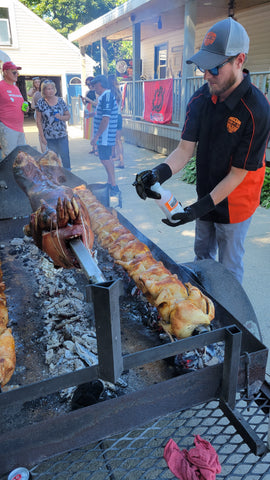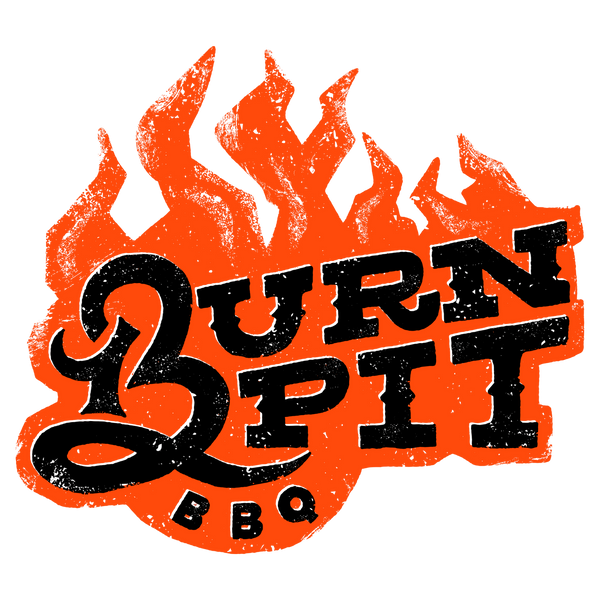
Cooking A Whole Hog - The Basics
Share
There’s nothing like cooking a whole hog over an open fire. We recently cooked a 70 pound hog and 30 whole chickens for a private event. If you’ve never done a whole pig before, we definitely recommend giving it a try! It takes a bit of learning and patience, but once you get it down, it’s a great way to spend a day! Here are some tips to get you started.
Listen to the podcast where we break down the action!

Where to get a pig?
We worked with our local butcher to find a pig the right size to serve our party. You’ll want to make sure you have enough. Plan on getting 1-1.5 pounds per person.
Where to get a rotisserie or spit?
Our butcher that we got the pig from also rents trailers with rotisseries. You can certainly build your own, but if you are just starting out, look for a place nearby that rents them.

How long should you plan on cooking it?
It depends on the size, but the general rule of thumb is about 1 hour for every 10 pounds of dead pig weight

What equipment is needed?
Here is what we recommend to get you started:
- Rotisserie
- 2-3 charcoal chimney starters
- Lump Charcoal
- Shovel for moving charcoal around
- High heat gloves (like welders gloves)
- Spray bottle
- Meat thermometers
- Extension cords
- Knife for cutting
- 2 - 6ft tables
- Heavy duty aluminum foil
- Heavy duty aluminum pans

How to cook using a rotisserie?
- Cook low and slow at around 250 F degrees
- Cook the pig 12” away from the source of heat.
- Keep the heat constant.
- When pig reaches 160 degrees F move the pig away from the heat.
- An estimated 1-2 hours will keep the pig warm without drying out.
***Time is a variant! One must be flexible in the timing and cooking process, checking the hog often is essential.
When is the pig done?
We pulled this one at approximately 170 degrees F. Once we got close, we moved the hog closer to the coals to crisp up the skin

Should you let it rest before slicing?
If you type that question into Google, you’ll get a different answer every time. Believe us, we've done the research for you! Some recommend waiting 30-60 minutes, others say start slicing right away. We let it rest about 15 minutes before we dug in. It was still hot, so make sure you have some insulated meat gloves!

There you have it. These are some tips to get you started, but the best way to learn is to get out there and give it a try! Let us know how it goes!

1 comment
First – thank you both for your service and thank you for the event with US Bank! I know I asked a lot of questions :) You mentioned you pull whole hog at 160-170 degrees. We have held a Reformation Concert at our church for the past 15+ years where we roast a couple of hogs and make our own beer for the meal. Pulling at 160 – do you find any issues with pulling, especially in the hams? I tend to aim for 200-205 and even then I hit spots in the hams that is difficult to pull. Do you find that? Or maybe is that dependent on the size of the hog? Ours our usually 180-210 so maybe that’s part of it. About to listen to this podcast episode, but totally agree – whole hog is a completely different experience and I wish more people could try it! While it seems intimidating, it actually isn’t that much of a leap and the benefits are amazing. Thanks again and wishing you the best of luck. Grill on!